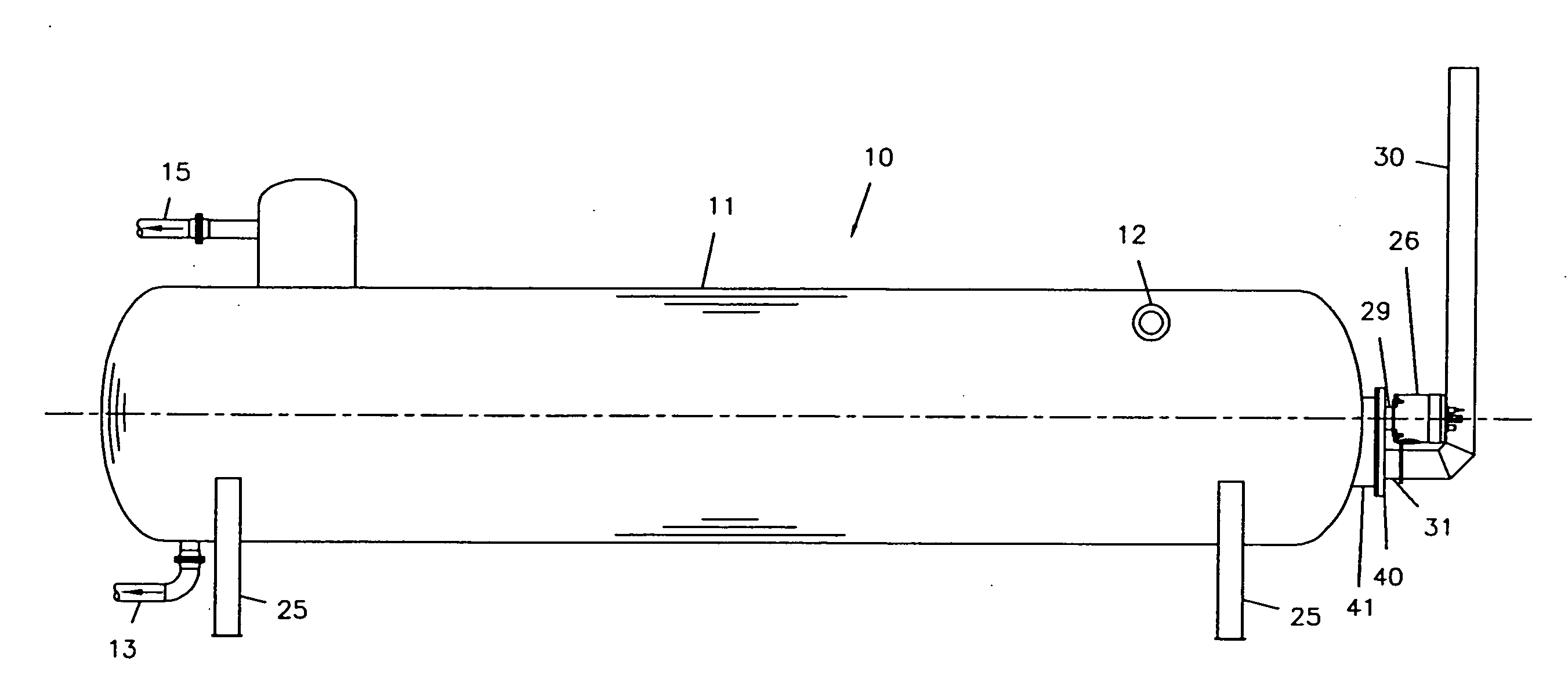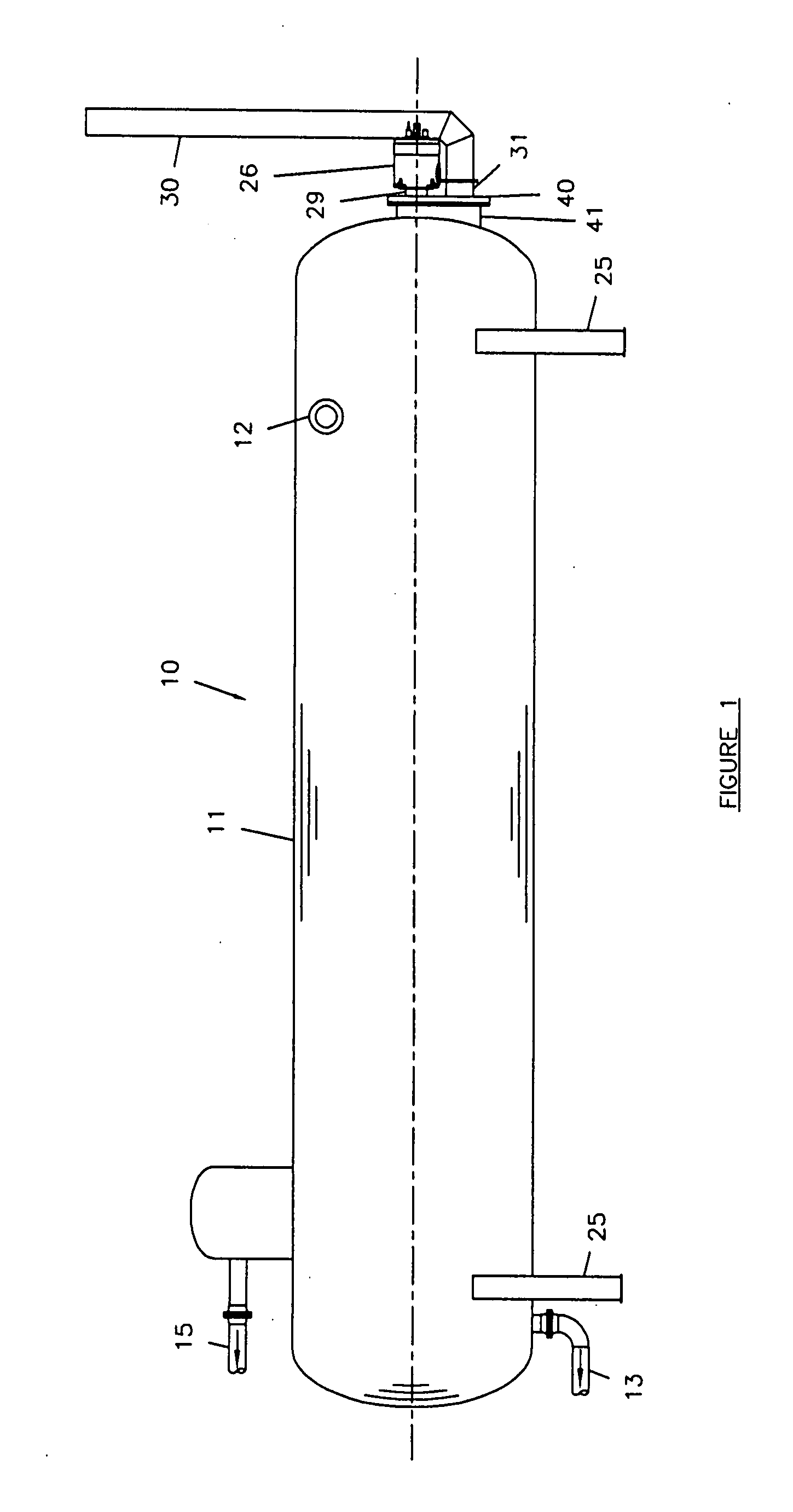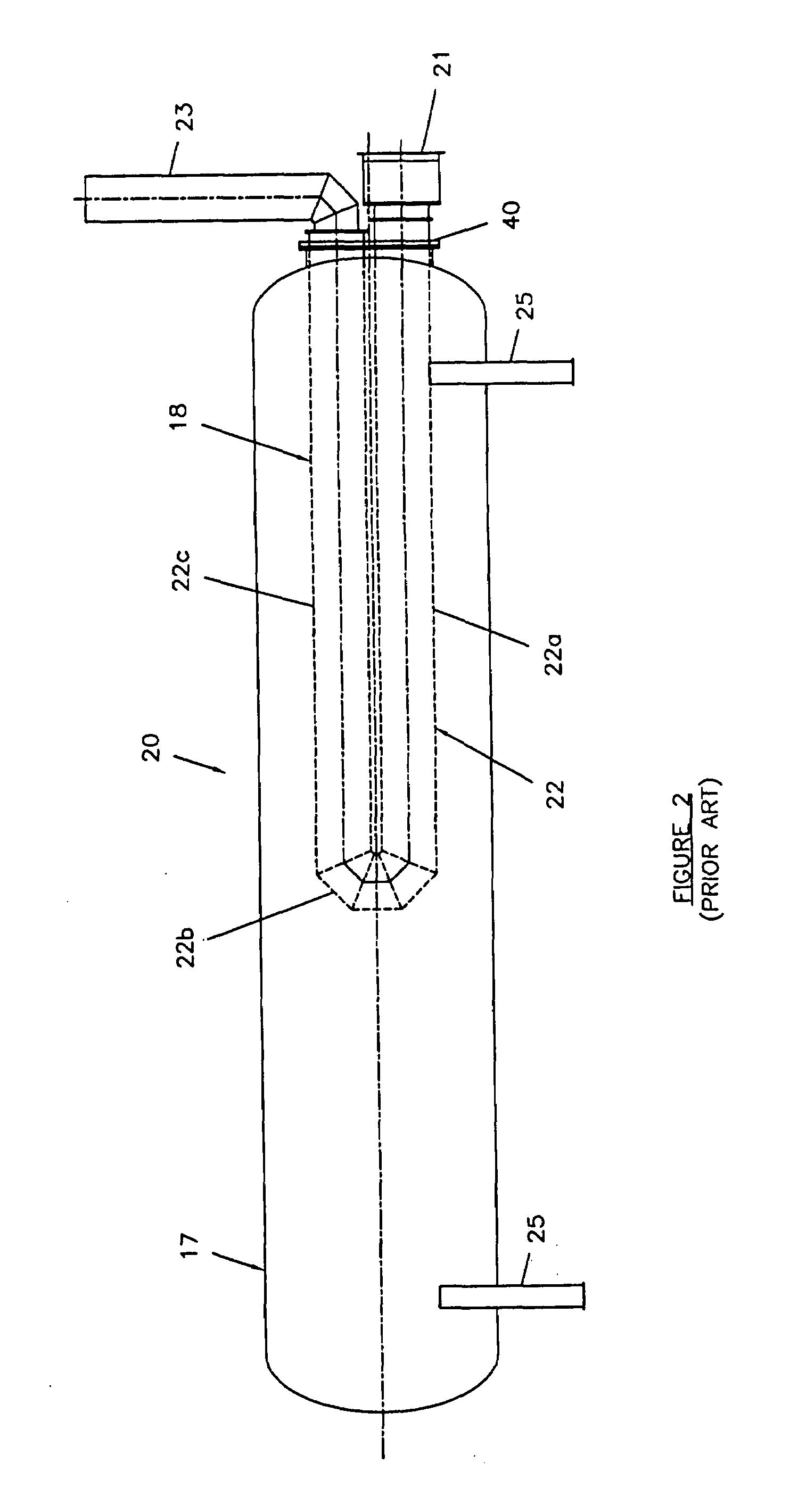Heated separation vessel for well fluids
a separation vessel and well fluid technology, applied in the direction of fire-tube steam boilers, fluid removal, insulation, etc., can solve the problems of increasing the heating requirement, increasing the difficulty of the typical natural draft burner system to meet such new standards, and increasing the government regulations. , to achieve the effect of more rapid and efficient heating of the fluid being separated
- Summary
- Abstract
- Description
- Claims
- Application Information
AI Technical Summary
Benefits of technology
Problems solved by technology
Method used
Image
Examples
Embodiment Construction
[0014]Referring first briefly to FIG. 1, it can be seen that there is present a separating unit 10 formed by an elongated, sealed vessel 11 of circular cross section to which is transferred from an adjacent well (not shown) production material which normally consists of oil, water, natural gas, and possibly other impurities through vessel pipe 12. After entering the vessel, the production materials flow towards the opposite end of the vessel during which separation of the constituents of well production occurs. Eventually, the fluids leave the vessel through separate outlets which includes oil and gas outlets shown as 13 and 15, respectively.
[0015]Returning now, however, to the features of the conventional natural draft burner system, reference is made to FIG. 2 of the drawings, wherein such a burner system is shown for adding heat to the separation process generally designated 17. The heating system thereof is generally designated 18 contained in an elongated separation vessel 20. ...
PUM
| Property | Measurement | Unit |
|---|---|---|
| heat to | aaaaa | aaaaa |
| lengths | aaaaa | aaaaa |
| length | aaaaa | aaaaa |
Abstract
Description
Claims
Application Information
 Login to View More
Login to View More - R&D Engineer
- R&D Manager
- IP Professional
- Industry Leading Data Capabilities
- Powerful AI technology
- Patent DNA Extraction
Browse by: Latest US Patents, China's latest patents, Technical Efficacy Thesaurus, Application Domain, Technology Topic, Popular Technical Reports.
© 2024 PatSnap. All rights reserved.Legal|Privacy policy|Modern Slavery Act Transparency Statement|Sitemap|About US| Contact US: help@patsnap.com










